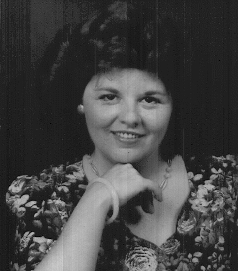 |
Hello, I am Debra Neiman, RN BSN.
I have worked in Neonatal Care,
at Beauregard Memorial Hospital, DeRidder for over four years. My college
experience at Louisiana State University at Alexandria, resulted in a great
deal of research papers, which are gathering dust in my office. My curriculum
at Northwestern State University also added to this wealth of information.
I hereby begin this series to
provide a way to get this information to those in the nursing field and
any other person with a passing interest in these subjects.
Feel free to reference of use this information in your practice.
However, please respect my Copyright and do not "BORROW" for your HOMEWORK assignments.
|
BACK TO MY PAPERS ONLINE INDEX
HOME | ROUNDS
| ISSUES | NEWBORN
| NICU | WEIRD
SCIENCE
VISIT MY GENEALOGY SITE
| MY
X-FILES & MYSTERIES SITE

LinkExchange Member
Necrotizing Enterocolitis
Inservice to Staff
Newborn Nursery Unit
Beauregard Memorial Hospital
Debra Neiman, RN, BSN, 22 February 1995
Prepared in conjunction with
requirements for Bachelors Degree
Northwestern State University
I. LECTURE OUTLINE
Definition
Necrotizing Enterocolitis (NEC) is acute inflammation of the
bowel, characterized by ischemic necrosis of GI mucosa that may lead
to perforation and peritonitis (Wong &
Whaley, 1990). The ileum is most often affected, but the
ascending colon, cecum, transverse colon, and rectosigmoid may also
be involved (Byrne, 1984).
Pathophysiology
The etiology of NEC is unknown. Although risk factors are
identifiable, prediction of which infants will develop NEC is not
reliable. The best way to prevent NEC is to prevent premature birth
(Pickler & Terrell, 1994).
Premature infants account for 90% of the cases of NEC. Onset is
usually between 4 to 10 days, however, NEC may appear as early as
4 hours or as late as 30 days. Term infants generally develop early
onset of NEC. Infants less than 26 weeks gestation tend to have NEC
at an older age and thus have a longer duration of risk
(Vanderhoof, Zach, & Adrian,
1994). There are between 2,000 and 4,000 cases of NEC
in the United States each year or about 1% to 10% of NICU patients.
Early identification is a priority and long-term prognosis of
survivors appears to be the same as for infants without NEC
(Kanto, Stoll, Child, Cotsonis, &
Bain, 1988).
Predisposing Factors
Prematurity is the leading risk factor for NEC. This may be due
in part to the multifactor association of prematurity with neonatal
asphyxia or hypoxia and an immature immunological system. Prenatal
stresses such as maternal vaginal bleeding, pregnancy-induced
hypertension, or maternal cocaine use are associated with increased
incidence of NEC (Coon, 1992).
Risk factors for newborns in the NICU have been associated with
umbilical catheters, exchange transfusions, hyperosmolar formulas,
and microbial agents (Vanderhoof
et al., 1994).
Assessment
The earliest and most common sign of NEC is a distended abdomen
which is especially tense or rigid with gastric retention. Other
signs include increased gastric residuals (2 ml or more) before
feedings, decreasing bowel sounds, and bile stained vomitus. Occult
blood in stool (positive guaiac test) may be attributed to rectal
fissures, although, about 25% of NEC cases will have bloody diarrhea.
A taut abdomen with red or shiny skin is indicative of peritonitis.
Non specific symptoms include thermal instability, apnea, bradycardia,
metabolic acidosis, lethargy, poor feeding, vomiting, pallor or
jaundice (Massoni, 1991).
Prevention
The best prevention is to reduce prenatal complications and
prevent premature labor. NEC has been associated with immaturity of
the intestinal mucosal barrier in the premature newborn. After the
newborn is delivered, aggressive treatment of hypoxia is necessary
to prevent a "diving reflex" of shunting blood away from the
intestine. It has been suggested that this mechanism may be
responsible for the initial ischemia of the tissues of the gut in
an infant with hypoxia (
Vanderhoof et al., 1994).
Careful handling of the newborn, using nesting support in the
incubator, protecting the thermal homeostasis, and reducing oxygen
requirements may provide a degree of protection for the infant at
risk (Pickler & Terrell, 1994
).
Breastfeeding does not totally eliminate the risk of NEC, but
it greatly reduces the incidence. This is attributed to the early
milk, colostrum, which contains a high concentration of
immunoglobulin A which directly protects the newborn gut from
infection. Breastmilk has a low pH which inhibits growth of many
organisms and also contains live macrophages to fight infection.
Breastfeeding mothers may pump their breasts to provide gavage
feedings for their NICU newborns. Nurses should be aware of the
need to feed the milk specimens in the order it was pumped. Also
instruct the mother not to freeze or expose the milk to high heat.
This will destroy helpful antibodies. Also, the milk should be
stored in plastic containers only. Leukocytes in the milk will
adhere to a glass container and not be provided to the newborn.
Breastmilk may be refrigerated up to 48 hours
(Massoni, 1991).
Whaley & Wong recommends putting two drops of formula into the
newborn's mouth and allowing pacifier use during gavage feedings to
aid the development of suck-swallow coordination (
1990). Recent research supports the use
of a pacifier for nonnutritive sucking (NNS). Reduced incidence of
NEC, improved oxygenation during gavage feeding, reduced heart rate,
and improved weight gain have been strongly correlated to the use
of NNS. Pacifier use provides the newborn a more rapid transition
from gavage feedings to bottle feeding, with improved bottle feeding
performance, and increased alertness before bottle feeding. This
results in shorter hospital stays (
Pickler & Terrell, 1994).
Research supports two suggestions for the reduction of incidence
of NEC in infants supported with NNS. Vagus nerve stimulation by NNS
is the first suggestion and is strongly supported by several studies.
Vagal stimulation increases insulin secretion and may improve glucose
utilization. Increased gastrin secretion is also reported, which
stimulates acid secretion, gastric motility and growth of intestinal
mucosa. Somatostatin secretion is also reported to be reduced with
NNS during gavage feedings. This reduction results in increased
gastric emptying (Pickler &
Terrell, 1994).
Secondly, NNS during gavage feeding of the premature newborn is
associated with helping achieve optimal behavior states, which
provides for reduction in energy expenditures and improved
neurobehavioral organization. When used before bottle feedings,
NNS reduces restless states, increase quiet alert state and readiness
to nurse. After bottle feeding, NNS promotes a more rapid transition
to the quiescent behavior state (
Pickler & Terrell, 1994).
Management of Suspected NEC
Notify physician of observations and change in status. Abdominal
circumferences should be documented. Assessment of abdominal bowel
sounds, gastric residuals, changes in level of activity, muscle tone,
color, and vomiting is essential. Infant should be held NPO and
nasogastric tube open to air to reduce gastric distention. Maintain a
safe environment, protecting temperature stability, and reducing
oxygen requirements. Prevent pressure on abdomen and leave diaper off
or loosely taped. Position the infant on the side or back, DO NOT
PLACE PRONE. Promote asepsis and follow strict handwashing
(Wong & Whaley, 1990).
Diagnosis is confirmed by abdominal anteroposterior and lateral
x-ray. Implement specific therapy as ordered. Anticipate orders for
NPO, gastric suction, IV fluids and antibiotics, and transfer to NICU.
Share information with family, providing support and anticipatory
guidance (Massoni, 1991).
II. LEARNING THEORY UTILIZED
Androgogy is the concept of adult learning. According to Malcolm
Knowles, adults are mature learners with special needs. Adults are
self-directed, proven learners, and their experiences are varied and
valuable. Adults are task or problem oriented and learn best in
relaxed and informal climates (
Marquis & Huston, 1992).
The teaching plan includes this theory. The nurses in the
newborn unit often care for premature newborns over a stay of three
to four weeks. They are self motivated to solving the immediate,
task oriented problem of identifying the newborn at risk and
recognizing the signs and symptoms of early NEC. The post test is a
self evaluation, and the handout becomes a permanent resource for
future reference. Peer teaching becomes an informal method of sharing
information and experience in the familiar setting of the unit.
III. TEACHING PLAN
Nursing Diagnosis
Knowledge Deficit: necrotizing enterocolitis (NEC) related to
minimal previous instruction and experience with the subject.
Overall Goal
Nursery Staff Nurses will improve assessment skill and knowledge
to identify risk factors, preventive interventions, and early signs
of necrotizing enterocolitis.
Outcome Criteria
Nursery Staff Nurses will participate in discussion of NEC and
will complete NEC post-test successfully, indicating improved ability
to reduce risk for NEC and identify NEC early in newborns at
Beauregard Memorial Hospital.
Specific Objectives
1. Nurse will attend staff meeting and inservice on NEC.
2. Nurse will actively participate in open discussion during
teaching session.
3. Nurse will demonstrate understanding of risk factors,
preventative nursing interventions, and early identification of NEC
by successfully completing post test.
Teaching Activity
1. Notice of inservice posted on bulletin board and on staff
work schedule. Information was provided through lecture and with
handout for staff's inservice notebooks. Poster used to provide
visual aid emphasizing with major points in concise terms, easily
read, and to reinforce presentation of the data.
.
2. Demonstration with newborn of assessment technique with
participation from staff, question and answer period, and discussion
of nursing implications for our unit.
3. Short post test completed by nursing staff.
Evaluation of Teaching Plan
1. A total of ten out of fifteen staff members attended.
2. The demonstration was assisted by one staff member and
there was an appropriate answer and question session.
3. The post test was completed by all attending and
demonstrates a good understanding of the material provided.
Self Evaluation
I was pleased with the overall effectiveness of the
presentation. The verbal feedback from the staff indicated the
was presented well and understood.
HANDOUT
POST TEST

IV. References Cited
Byrne, W. J. (1984). Disorders of the
intestines and pancreas: Necrotizing enterocolitis. In H. W.
Taeusch, R. A. Ballard, & M. A. Avery (Eds.), Schaffer and Avery's
Diseases of the Newborn (6th ed.), pp. 686-689. Philadelphia:
Saunders.
Coon, S. L. (1992). Neonatal necrotizing
enterocolitis (NEC). AJN/MOSBY Nursing Boards Review for the NCLEX-RN Examination
(8th ed.),
pp. 391-392. St. Louis: Mosby.
Kanto, W., Stoll, B., Child, C., Cotsonis, G.,
& Bain, R. (1988). The cost of necrotizing enterocolitis. Perinatrology-Neonatology,
12(1), 32-34.
Marquis, B. L. & Huston, C. J. (1992).
Leadership Roles and Management Functions in Nursing: Theory and Application
.
Philadelphia: Lippincott.
Massoni, M. (1991). Gastrointestinal care: Necrotizing
enterocolitis. In Illustrated Manual of Nursing Practice
(pp. 734-735). Springhouse,
Pennsylvania: Springhouse.
Pickler, R. H. & Terrell, B. V. (1994).
Nonnutritive sucking and necrotizing enterocolitis. Neonatal Network, 13(8), 15-18.
Vanderhoof, J., Zach, T., & Adrian, T.
(1994). Abnormalities of the gastrointestinal tract: Necrotizing
enterocolitis. In G. B. Avery, M. A. Fletcher, & M. G. MacDonald
(Eds.), Neonatology: Pathophysiology and Management of the
Newborn (4th ed.), pp. 614-615. Philadelphia: Lippincott.
Wong, D. L. & Whaley, L. F. (1990).
Clinical Manual of Pediatric Nursing (3rd ed.), p. 312.
St. Louis: Mosby.

Copyright, ©1997 Debra Kay Neiman,
RN BSN
E-Mail me at: crystalblue@usa.net


